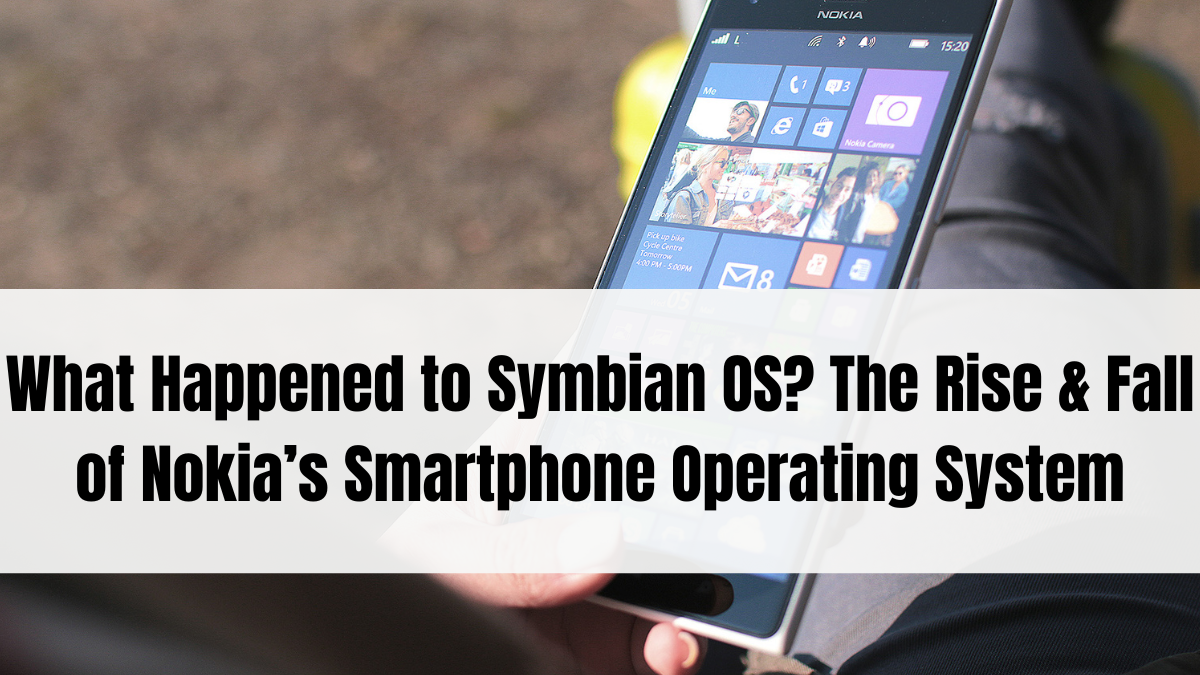Once the undisputed king of mobile operating systems, Symbian OS phones ruled the market before smartphones became what they are today. It powered everything from Nokia’s iconic N-series and E-series to Sony Ericsson and Samsung devices. But in 2025, many tech users are unaware that Symbian even existed. So what really happened to Symbian OS? Let’s unpack the rise, dominance, and ultimate disappearance of this once-mighty mobile OS.

What Was Symbian OS and Why Was It So Popular?
Symbian OS was a mobile operating system designed specifically for smartphones and personal digital assistants (PDAs). It was fast, highly customizable, and could run on devices with low memory.
Key features of Symbian OS phones:
-
Efficient battery usage and low resource consumption
-
Multitasking abilities in early 2000s
-
Optimized for keypad-based navigation
-
Compatibility with Java and C++ applications
-
Deep integration with Nokia’s hardware design
Timeline: Symbian’s Journey to the Top
Here’s a quick snapshot of Symbian OS’s lifecycle:
| Year | Milestone |
|---|---|
| 1998 | Symbian Ltd. formed as a joint venture between Nokia, Ericsson, and others |
| 2001 | First Symbian smartphone released (Nokia 9210 Communicator) |
| 2006 | Symbian dominates global mobile OS market with over 60% share |
| 2008 | Nokia acquires full control of Symbian OS |
| 2010 | Android overtakes Symbian in global market share |
| 2012 | Nokia announces end of Symbian development |
By 2006, Symbian OS powered more than 300 million devices worldwide. That dominance, however, didn’t last long.
Why Did Symbian OS Phones Decline?
Despite its early success, Symbian OS phones failed to adapt to the rapid evolution of smartphones led by Apple’s iOS and Google’s Android.
Major reasons for Symbian’s decline:
-
Lack of developer-friendly tools and app ecosystem
-
Inability to support capacitive touchscreens properly
-
Complex and outdated UI compared to iOS/Android
-
Fragmentation due to manufacturer-specific versions
-
Slow innovation cycles at Nokia and Symbian Foundation
Nokia’s decision to stick with Symbian too long also contributed to its eventual collapse. Android offered open-source freedom and a better app marketplace. Symbian couldn’t compete.
Transition from Symbian to Windows Phone – The Final Blow
In 2011, Nokia partnered with Microsoft to replace Symbian OS phones with Windows Phone. This move sealed the fate of Symbian.
-
New models like Lumia were built on Windows
-
Developer and user support for Symbian vanished
-
The final Symbian phone (Nokia 808 PureView) was released in 2012
-
Nokia officially ended support for Symbian in 2014
The decision alienated millions of loyal Nokia users who were still relying on their stable, keypad-based phones.
Nostalgia and Legacy of Symbian OS Phones
Although Symbian is now discontinued, it holds a special place in mobile history. It laid the foundation for multitasking, widgets, and mobile customization that modern systems built upon.
What Symbian did before others:
-
Background apps (way before Android)
-
Theme customization
-
Infrared & Bluetooth sharing
-
Mobile office suite support
-
Early use of mobile web browsing
Should You Still Care About Symbian in 2025?
From a historical perspective, yes. Knowing about Symbian OS phones is essential for understanding how mobile technology evolved. It’s also a lesson in how companies must innovate or risk becoming obsolete.
Tech Takeaways:
-
Symbian was the original smartphone OS before the iPhone era
-
Innovation speed and developer support are crucial in tech
-
UI simplicity and user experience matter more than raw features
-
Ignoring trends like touchscreen adoption can destroy an empire
FAQs
What was the last Symbian OS phone ever released?
The last official Symbian phone was the Nokia 808 PureView, released in 2012, known for its 41 MP camera.
Why did Nokia stop using Symbian OS?
Nokia stopped using Symbian due to its outdated software architecture, weak app ecosystem, and inability to compete with Android and iOS.
Did other companies use Symbian OS?
Yes, other manufacturers like Sony Ericsson, Samsung, and Motorola also released devices powered by Symbian.
Is Symbian OS open source?
For a brief period, the Symbian Foundation attempted to make it open source, but it was later reversed and discontinued.
Can I still use Symbian OS phones today?
While some Symbian phones still work, they are no longer supported by manufacturers, developers, or mobile networks.
Click here to know more.
